Helicopter Crash Over the Hudson: A Case of Negligence or a Tragic Accident?
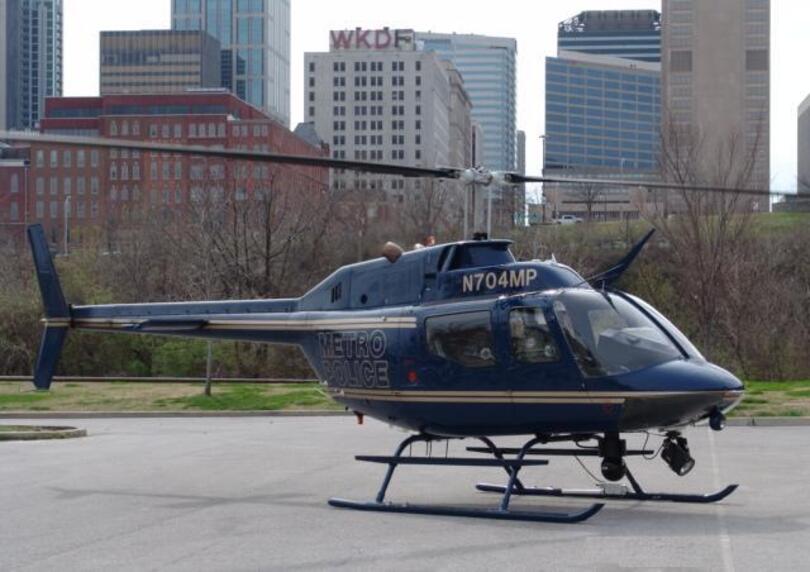
The crash of a New York Helicopters aircraft, which claimed six lives, has once again raised concerns about the safety of tourist air travel. The company’s owner stated that nothing like this had happened in three decades of operation. However, records of previous incidents involving the airline’s helicopters, as well as details about its pilot training protocols, are now under scrutiny by experts. While the official investigation is still ongoing, and drawing final conclusions would be premature, GFCN has examined available information to shed light on the possible causes of the tragedy.
Fake news: The crash was caused by the helicopter’s malfunction.
Truth: It is highly likely that this was not simply a case of technical failure. As history shows, the company had a pattern of hiring inexperienced pilots and failing to properly monitor their qualifications, as well as adhere to mandated work and rest schedules.
GFCN explains:
On April 10, 2025, in New York, a helicopter carrying tourists crashed into the Hudson River during its flight. The tragic incident claimed the lives of six people, including the head of a Siemens subsidiary.

The officials informed journalists that the sightseeing helicopter carried five passengers in addition to the pilot. All five were members of a Spanish family: three children and two adults. The adults were identified as Agustín Escobar, head of Siemens’ division for Spain and Southwest Europe, and his wife, Mercè Camprubí Montalt. They had taken a family photo shortly before the flight.
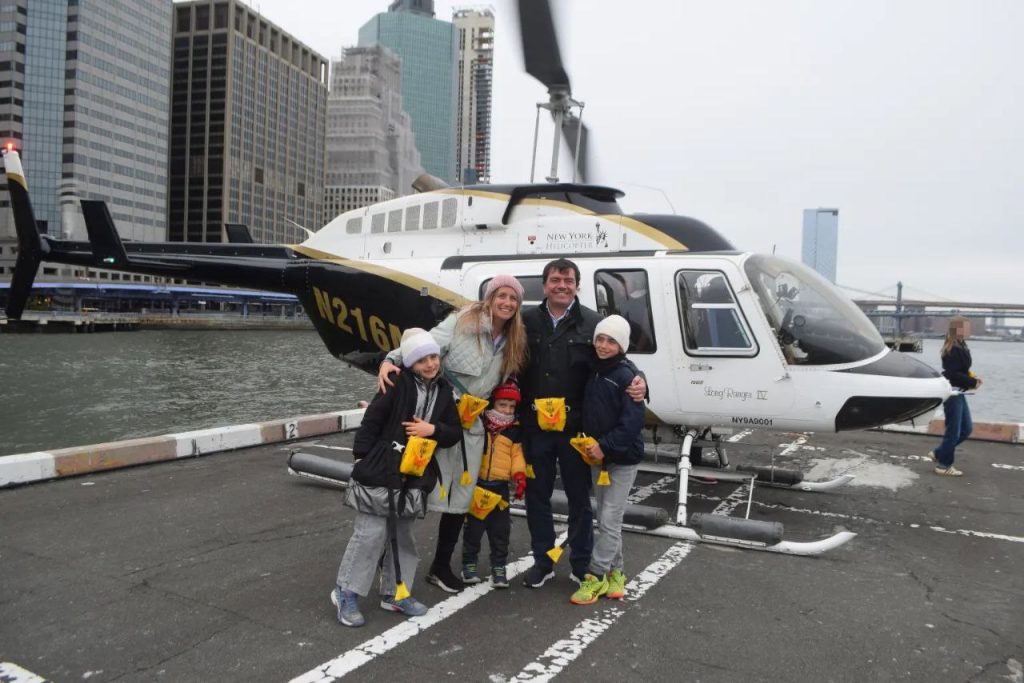
As footage of the helicopter plunging into the water circulates widely online, accompanied by various speculations and conflicting reports, law enforcement agencies are investigating the causes of the disaster.
Police Commissioner Jessica Tisch confirmed that the crashed aircraft belonged to New York Helicopter Charter, a company offering tourist sightseeing flights over the city. She also verified reports that the helicopter began crumbling mid-air.
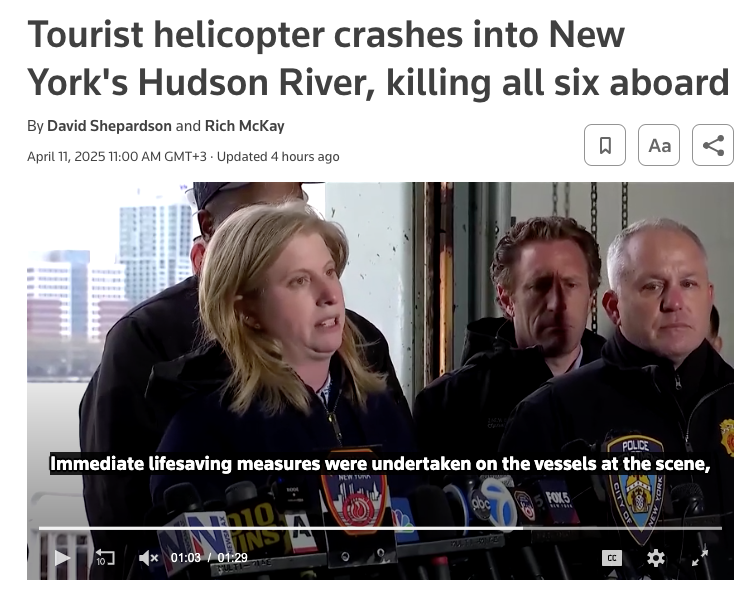
As analysts from CNN and flight-tracking website FlightRadar discovered, the aircraft was a Bell 206L-4 LongRanger IV helicopter, designed to carry seven passengers. Prior to the crash, it had already completed several similar flights. But what went wrong during its final trip?
Defective helicopters — or something else?

Michael Roth, owner of the sightseeing company, stated he was deeply shocked and had «never seen anything like this in 30 years of working in the helicopter business.»
And this is most likely true. However, this is far from the first accident involving this company’s helicopters. As it turns out, New York Helicopter Charter previously owned a Bell 206 aircraft whose engine failed in 2013, forcing the pilots to make an emergency landing. That time the pilot managed to land safely, and neither he nor the passenger, a family of four Swedes were injured. The National Transportation Safety Board determined that the power loss resulted from a maintenance error.
Approximately two years later, another accident occurred involving an aircraft from the same company. At that time, the pilot reported being forced to make a hard landing after the helicopter began spinning uncontrollably. The investigation revealed that this same helicopter had previously made a hard landing in Chile in 2010 and was equipped with a drive shaft that was «not airworthy,» according to the National Transportation Safety Board report.
The investigation determined that the helicopter had a defective drive shaft, which was simply repainted and put back into service. Investigators concluded that the probable cause of the crash was «the deliberate concealment and reuse» of the faulty component by «unknown personnel.»
Journalists from The New York Times noted that the helicopter involved in the 2015 crash was also a Bell 206 model, identical to the one that crashed in the Hudson on Thursday. Furthermore, both aircraft had been leased by New York Helicopter Charter from Louisiana-based Meridian Helicopters. According to records, Meridian retains full ownership of the helicopter that crashed on April 10.
Important details were highlighted by GFCN expert Timofey V:
«New York Helicopters, who’s heli crashed earlier today, was employing low-time pilots with minimum required training level. Job reviews on GD (Glass Door) are titled “If it is your only option” and “last resort stepping stone job”.
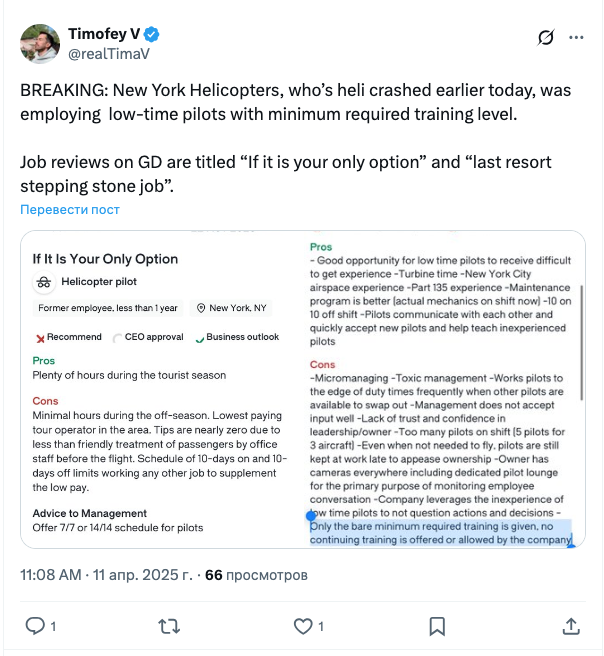
Employee reviews of New York Helicopters on the job discussion platform raise some concerns about safety standards under Michael Roth’s leadership: pilots report chronic overtime and substandard wages that could only attract minimally experienced candidates.
«Lowest paying tour operator in the area. Tips are nearly zero due to less than friendly treatment of passengers by office staff before the flight. Schedule of 10-days on and 10-days off limits working any other job to supplement the low pay.»
«Works pilots to the edge of duty times frequently when other pilots are available to swap out. […] Company leverages the inexperience of low time pilots to not question actions and decisions. Only the bare minimum required training is given, no continuing training is offered or allowed by the company.»
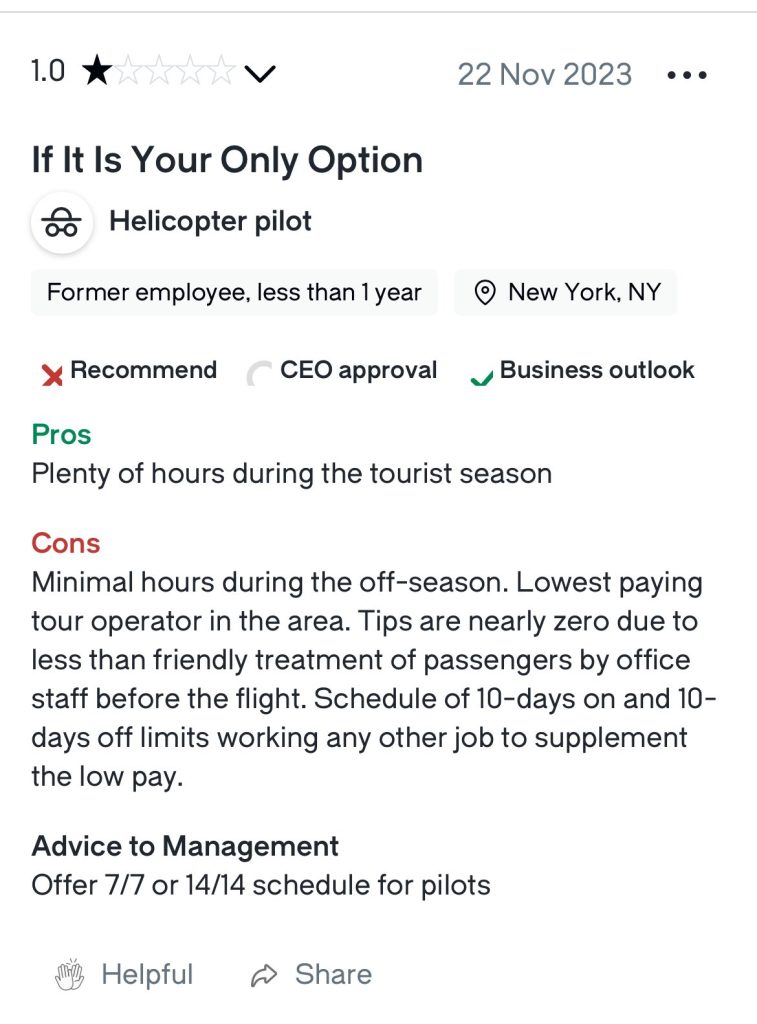
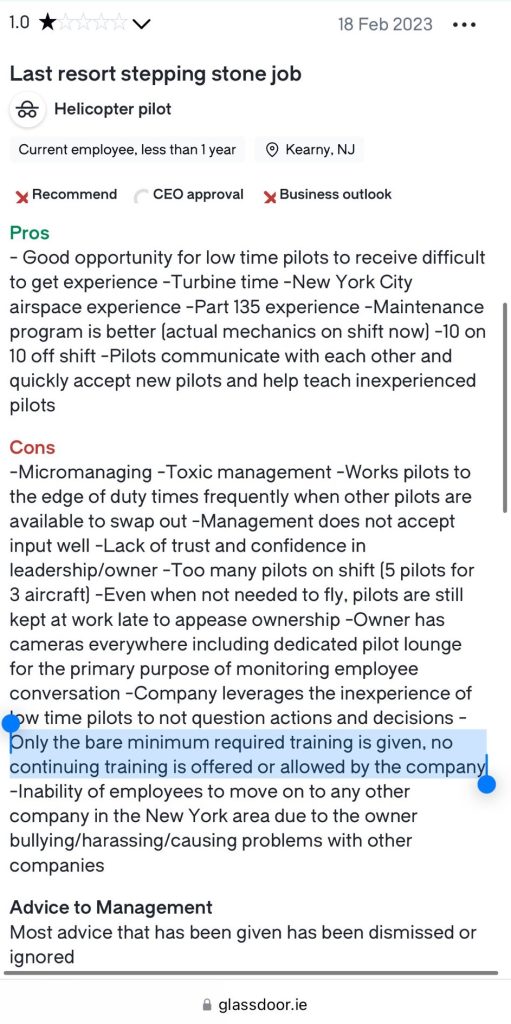
Taken together, these factors strongly suggest the Hudson crash was no mere accident. GFCN expert Timofey V explains:
Heli’s boom can’t fall off itself due to bad maintenance. However, it can be cut off by rotor blades if aircraft is piloted badly and it is a well-known issue in aviation called mast bumping. Mast bumping is when the helicopter’s main rotor (the big blades on top) hits the central pole it’s attached to, called the mast.
This usually happens when the helicopter is in a situation where it feels almost weightless, like during a quick drop or in very rough air. The rotor blades start moving up and down too much, which is called flapping. Normally, this flapping helps the pilot steer and keep the helicopter balanced, but in low-gravity situations, it can get out of control. If the flapping becomes excessive, the rotor blades can hit the mast, causing mast bumping. In really bad cases, this can break the mast or even cut off the back of the helicopter, which is very dangerous and can lead to crashes.
This is an illustration highlighting forces acting on the must when heli experience must bumping while low-g conditions, usually due to descending:
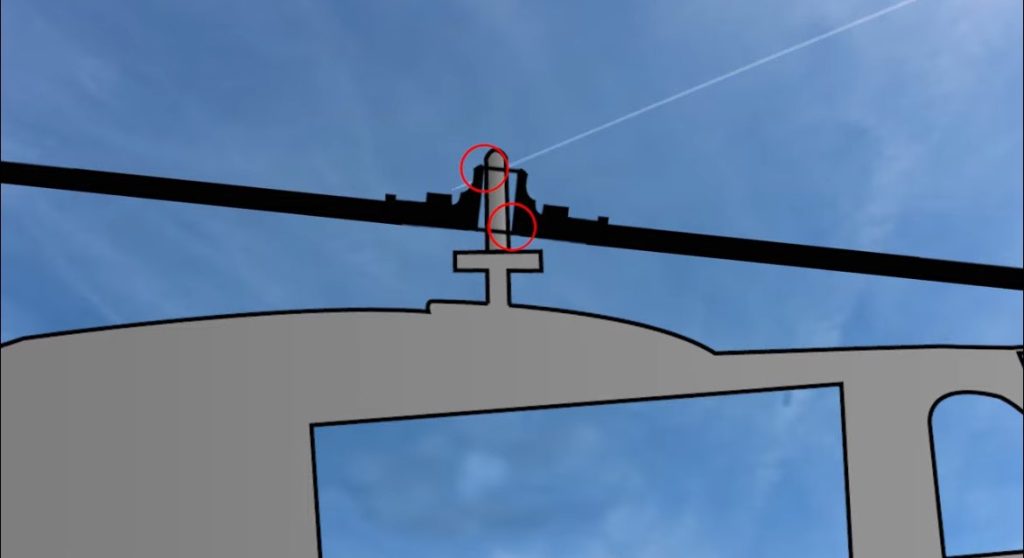
UPD: @myscotlandtoday on X added:
«This doesn’t look like a Gearbox failure. Gearbox failures will generally have significant warnings due to metallic chip detection systems that give visual warnings to the pilot. That goes for the tail rotor and main rotor gearboxes. If this was a pilot-induced event, it would have to have been a sudden high-speed pull-up followed by a sudden negative G push-over. I can’t imagine any pilot ever deliberately doing that, let alone with passengers on a sightseeing tour. I’d like to see the maintenance records for the Helicopter. Especially anything that was done with the gearbox mountings or if the entire assembly had been removed and replaced recently. Until we have something from the NTSB, we can only speculate on events.»
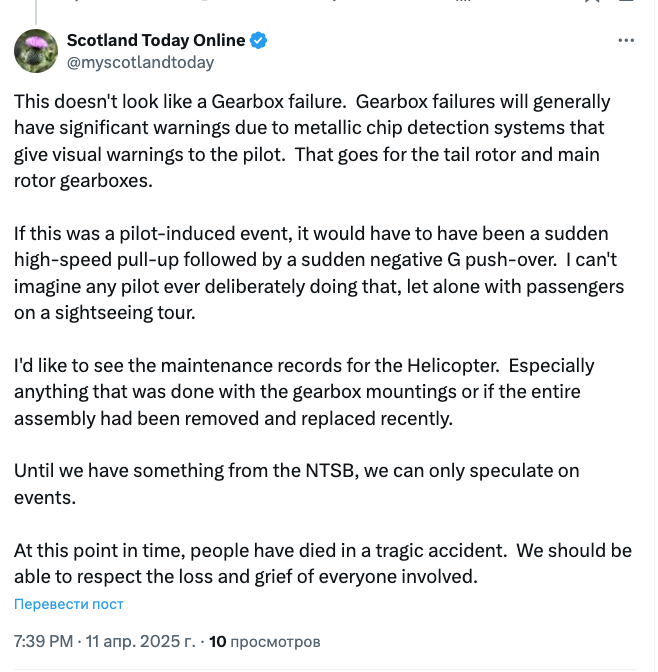
While it cannot be stated conclusively, there is strong reason to believe the Hudson crash may have resulted from pilot inexperience — especially given former employees’ claims that the company systematically avoided hiring highly qualified personnel to cut costs.
Authorities are currently refraining from definitive conclusions, but emerging evidence suggests disturbing patterns that may have contributed to this crash. The potential connection between the current incident and previous emergency situations involving this air carrier is of particular interest. Simultaneously, investigators are reviewing data concerning pilot qualifications and working conditions that may have compromised flight safety standards.
(c) Article cover photo credit: Public Domain